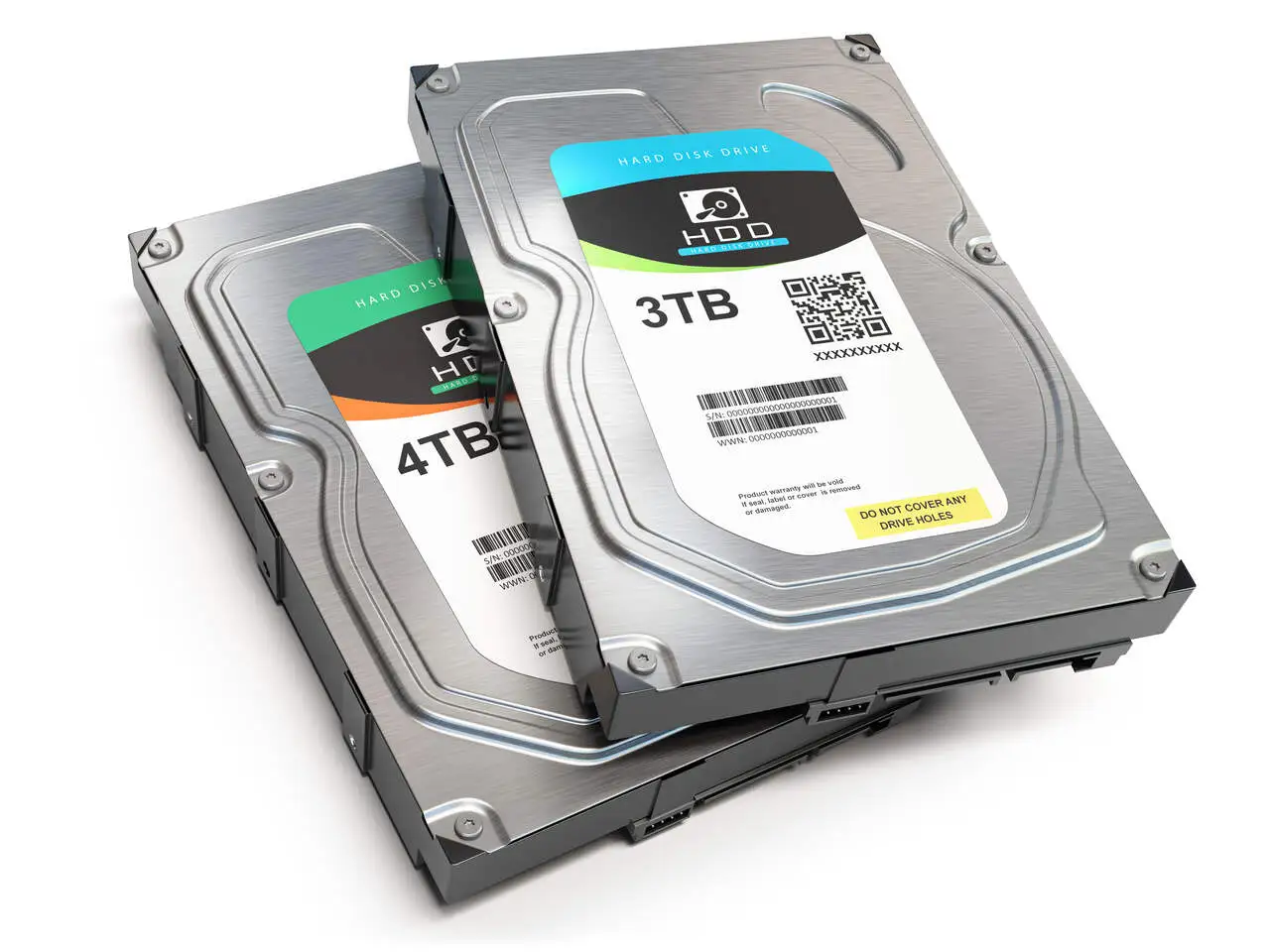
WORLDWIDE SERVICE
RECOVERED DATA CENTERS
EXPERIENCE CONSOLIDATED
24H SUPPORT FOR EMERGENCIES
REMOTE DATA RECOVERY
TOTAL PROTECTION OF YOUR DATA
Recover SAN (Storage Area Network)
SAN systems are a step up from their “brothers”, NAS and DAS. SAN is an enterprise system designed to provide high performance, low latency storage by combining storage servers with high-speed interconnects.
Low latency is of paramount importance, especially for enterprises that have a high flow of information access by many people at the same time in demanding applications.
The main purpose of SAN is to allow simultaneous access and sharing of the same file, i.e. multiple users accessing the same file and being able to make changes simultaneously.
SAN is more complex and more expensive than NAS, usually it is used by large companies that have an internal IT team.
Even though there is a whole IT team and settings in place to prevent any kind of failure affecting the stored files, data loss on SAN devices is not impossible, on the contrary, it can be recurrent.
From a hardware malfunction, a configuration error, logical failures and even cyber attacks, all these cases can lead to a disastrous data loss, leaving the entire system unusable, paralyzing the operation of a company, which consequently can generate huge losses.
Up-to-date backups are a great response to data loss, but there are cases where there was an error and the backup is not available or is outdated. In these cases a company that specializes in SAN data recovery will need to be called in. Digital Recovery has been handling highly complex data loss cases for more than 25 years.
Why Digital Recovery?
Digital Recovery is a company specialized in data recovery on personal and corporate devices. Over the years, we have developed our own technologies, which allow us to recover data from virtually any storage device, from HDDs and SSDs to complex RAID systems of any level, Storages (NAS, DAS, SAN), large servers, databases, virtual machines, among others.
Our main tool is called the Tracer, and with its help we achieve high percentages of successful cases in the most complex data loss scenarios.
Even if data has been encrypted after a ransomware attack and is completely unavailable, even in this scenario our solutions can be applied.
We have the best professionals in the area, and in emergency cases our labs operate with 24×7 availability, so that the recovery is done as quickly as possible.
We have signed a confidentiality agreement (NDA) with all our clients.
Contact us and start the advanced diagnostic right now so we can begin the process to recover your data.
We are always online
Please fill out the form, or select your preferred contact method. We will contact you to start recovering your files.
Success Cases
What our customers say about us
"We had a serious issue following a NAS server power outage in Raid 5. I immediately contacted DIGITAL RECOVERY. After a few days of hard work the issue was resolved."

"One of our RAID servers had stopped. After several attempts without fixing the problem we found DIGITAL RECOVERY and 5 hours later, at 4:00 am, the data was recovered."

"We referred DIGITAL RECOVERY in a special case (data loss) in a storage RAID 5. Digital Recovery recovered 32 million files and the customer was extremely satisfied."

"Without any doubts the best data recovery company. Digital Recovery contact details will always be saved on my cell phone, as I will inevitably need it again."

"The quality of the service is excellent. The attention given to the service is gratifying and the feedbacks that are given leave us calm, knowing that we can trust in the work and dedication."

Customer since 2017
"Great company, they saved me from a big problem!!! I recommend them, what a quick service, my thanks to the Digital Recovery team for the attention and speed in solving the problem! Awesome!"

"The second time I count on the agility and professionalism of the Digital Recovery team, they are very experienced and agile. I recommend them to everyone"

They helped me recover some data that I had thought was lost. I had a great experience with the team for their calmness, agility, and transparency.










Answers from our experts
What are the main problems causing data loss on SAN Storages?
- Logical Problems – This type of problem includes deleting files, deleting and formatting partitions, and overwriting data. Depending on the extent of the problem, you can try to reverse the disaster by backing up your system yourself. However, one has to be very careful not to create an even bigger problem by trying to solve the problem. It is quite common to receive cases where the good intention to solve the problem, but allied to the little experience of users and IT technicians resulted in an even bigger problem and unfortunately without possibility of solution, that is, the definitive loss of data. Besides logical problems in storage disks, controllers can also lose their configurations and compromise access to storage data.
- Hardware problems – All the parts of a server are parts that have been through careful engineering design, resiliency testing, and exhaustion testing. This means that your customers’ information is on a device with a much higher level of security when compared to standard devices. However, after years of working without a single problem happening, one or another part of the server may stop working. The most common problems are wear on the hard disks and problems related to RAID controllers. Problems can also occur in other parts of the server such as motherboards, connectors, and interface devices. However, these devices do not compromise the integrity of the data. If they are replaced, data access can be re-established without major problems.
- Electronic Circuit Crashes – Electrical crashes although rare in a data center environment can also happen. If this happens to only one disk (system with RAID 5 and RAID 10) the RAID system will function in a degraded fashion but without data loss. To solve the problem just replace the disk that stopped by a new disk so that the system itself triggers the rebuild process (reconstruction of information) and after this process the array will return to normality. If two or more disks are damaged it is very likely that the system’s backup will be necessary. If it is not up to date or out of date, you should consider consulting a company that specializes in data recovery. If the storage is configured with a RAID 6 arrangement, even if two disks have a problem, the system will still have access to the data and will continue to function in a degraded fashion until both disks are replaced. If by chance the disks are swapped and a third disk goes bad before the rebuild process of the first two crashed disks is complete, inevitably the storage will stop working.
- Ransomware Attacks – In recent years cyber attacks have become quite common. According to a report by global cybersecurity solutions company Check Point, 97% of businesses worldwide suffered at least one malware offensive in 2020. The most active malware in recent years is ransomware, hacker groups have specialized in encrypting victims’ data by charging high amounts to have the data restored.
What are the benefits of SAN?
We can summarize the benefits in:
- Accessing data quickly and with low latency;
- Preventing stress on the local network;
- Providing simultaneous access to applications that need this sharing (Ex: applications for video production).
What are the differences between SAN and NAS?
If you look at it from the top, both have the same goal, to manage and store data on a network. But even though they seem to do the same thing, SAN is designed for corporate use, while NAS can be used in homes and small businesses.
SAN is more expensive compared to NAS and requires specialized administration. SAN works as a local hard disk, while NAS works as a network attached drive.
These are just a few differences, the two have many other characteristics that set them apart.
Latest insights from our experts

Data loss, a real and present risk!
Data loss is a critical problem that affects individuals, companies and organizations of all sizes, and can result in devastating consequences, from the loss of

What is a zero-day attack?
A zero-day attack is a type of cyber threat that exploits a software vulnerability unknown to the developers or manufacturers of the software in question.

Best HD brands
When talking about the best hard disk drive (HDD) brands, it’s important to consider various aspects such as reliability, performance, storage capacity and value for
What you need to know
Can Storage be used as a server?
No, although they look similar they have small differences that separate them.
The Storage was developed for data storage, while the server, besides storing data, provides data processing, and it is even possible to install operating systems. Besides the fact that the fault tolerance of a storage is much higher than the fault tolerance of a server.
It is worth remembering that with the help of a RAID system the two can work together.
What is NAS?
NAS (Network Attached Storage) is one of the configurations of a Storage, they are: NAS, DAS and SAN. But NAS is the most used configuration.
The NAS system enables data access by all network users with proper permissions. NAS systems are flexible and can be expanded as needed.
One of their benefits is that it is possible to have a local private cloud, lowering costs and facilitating local control.
Does a NAS replace a backup system?
No, not at all. Many users use systems without backing up their data. It is important to note that as fault-tolerant as the equipment may be, it is not immune. So it is important to keep one or more copies of your data in different locations, as it is a good practice against data loss.
We recommend applying the 3x2x1 backup system (three copies, two online, one offline).
Is it possible to recover Storage remotely?
Yes, in the vast majority of cases, depending on what the cause of the data loss was. If the data loss was due to physical damage to the hard disks, it will be necessary to send the hard disks.
Remote recovery requires only a laptop that is exclusively for the process, connected to the Storage and with a good Internet connection. Remote recovery is perfect for companies that need to recover data quickly.
Consult our specialists to see if this service is available for your case.



